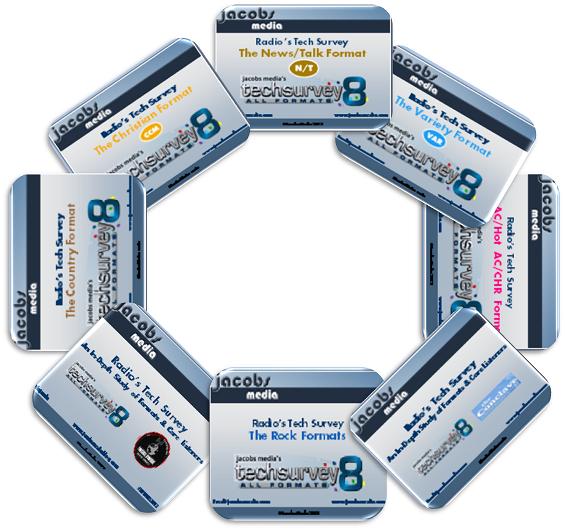 So here we are, wrapping up a six month process with Techsurvey8 as we’ve gone from design back in January to delivery in late April at the Worldwide Radio Summit. As many of you know, 170 stations and more than 57,300 respondents later, we have collectively put something together that is very special.
So here we are, wrapping up a six month process with Techsurvey8 as we’ve gone from design back in January to delivery in late April at the Worldwide Radio Summit. As many of you know, 170 stations and more than 57,300 respondents later, we have collectively put something together that is very special.
I would like to personally thank our stakeholder stations and their companies, Joel Denver and the All Access team, Dr. Ed Cohen and the “weighting” corps at Arbitron, and the industry trades who covered this project. I would also like to give a shout-out to my staff, especially Tim Davis who touches every aspect of these Techsurveys from design to data processing to execution. Together we pulled off the largest study in radio history, and a template that helps radio better understand the digital world around it.
I can’t count the number of Techsurvey8 webinars and live presentations we’ve delivered in the past ten weeks, but I know that a lot of you have seen this data in one form or another since it was first released. (You can access our individual format studies by visiting our website).
This year, the format data – 12 formats in all – provide granularity about some of the big differences that impact our brands. For example, Sports/Talk fans are, by far, the most into Twitter, Christian partisans are most likely to recommend their stations to others, and tablet owners are more apt to be devotees of Hot AC and News/Talk stations. In short, we learned that radio listeners differ from one another in many ways, allowing programmers to draw up media usage road maps to design strategies and tactics.
We also learned that once you get past favorite music and personalities, many core listeners depend on their favorite stations for key emotional needs – accompanying them at work, putting them in a better mood, providing companionship, and helping them to escape the pressures of everyday lives. Perhaps a tough economy has brought more value to some of these key emotional benefits that radio provides.
And the notion that radio and the car have a symbiotic relationship was reinforced by the fact that more than half our audience now spends the majority of their broadcast radio listening time while on four wheels. As automakers and aftermarket companies create hi-tech digital dashboards like Ford’s SYNC and Toyota’s Entune, the competition will intensify for the listener’s attention.
And we also know that among our core radio audience, they don’t all start their media days by turning on the radio. Many turn to TV’s morning shows, check their email, or head right to their Facebook pages. Clearly, stations have some work to do in this area. But on the other side of the coin, pure plays like Pandora come up short when it comes to the personality and local market connections – qualities that radio provides. This is a direct message to station owners and CEOs that this content needs to be maintained and grown if radio is to prosper in the digital environment.
 It’s a long way until we’ll be badgering you to participate in Techsurvey9 in early 2013. But we are already discussing questions and new areas to ask your audiences about. This year, it was Pinterest, Ford SYNC, and Amazon Kindles. Next year, who knows?
It’s a long way until we’ll be badgering you to participate in Techsurvey9 in early 2013. But we are already discussing questions and new areas to ask your audiences about. This year, it was Pinterest, Ford SYNC, and Amazon Kindles. Next year, who knows?
And that’s how we like it and why we do these studies. Radio companies, stations, and programmers need to be armed with information to help keep the industry up to speed. We collectively get better with great data.
Onward.
- Media And Technology In 2025: Believe It Or Not! - April 18, 2025
- In Radio, You Just Never Know - April 17, 2025
- The Secret To Making A Great Podcast (And Great Radio) - April 16, 2025






Leave a Reply